本文由 Centro de Colaboración Arquitectónica 授权mooool发表,欢迎转发,禁止以mooool编辑版本转载。
Thanks Centro de Colaboración Arquitectónica for authorizing the publication of the project on mooool, Text description provided by Centro de Colaboración Arquitectónica.
CCA:课外时间对孩子的全面发展至关重要,但在一些边缘地区,许多儿童在课外常常没有成人监督,这种情况对他们的健康安全构成极大地威胁。这些缺乏安全娱乐空间的地区,有时意味着暴力、吸毒和酗酒以及其它阻碍健康成长的不安全因素,甚至会导致社会结构的削弱,随之衍生而来的便是各种不平等的负面循环,以及许多其他对社区造成的严重后果。
该俱乐部建筑为6至18岁儿童和青少年打造了一个安全健康环境,提供许多具有创造性、创新性、有益于身体和智力发展的课外活动项目,也是一个可通过游戏、艺术和学习促进积极价值观和社区融合的空间。
CCA:After-school time is critical for children’s comprehensive development. In marginalized areas, many children are left without adult supervision when classes finish, a situation that poses a risk to their health, safety and general wellbeing. In these areas, the lack of safe spaces for recreation means that violence, drug and alcohol use, and insecurity hinder healthy development and lead to the weakening of the social fabric. This situation perpetuates negative cycles that generate inequality, among many other serious consequences for the community.
The Club of Niños y Niñas is a project established to provide young people aged between 6 and 18 years’ old a safe and healthy environment for creative, innovative, physical, and intellectual after-school activities; this is a space that promotes positive values and community integration through play, art, and learning.

俱乐部位于墨西哥蒂卡马克和埃卡特佩克两个城市的交界处,其两公里(1.2英里)半径范围内有15个低收入社区。该地区位于联邦内政部设立的特别预防犯罪区内。这两个城市的总人口为207万,是墨西哥人口密度、不安全和犯罪率最高的地区。
建筑最切题的设计挑战之一是与社区的互动:获得邻里的信任至关重要。我们在建设过程中,积极参与到社区中去,为周围社区的居民提供了各种活动,向他们介绍俱乐部的使命和计划。该项目的其他挑战则是寻求建筑材料的实物捐赠、与专家和承包商的合作以及获取公共和私营机构的支持。
The Club is located at the boundary between two municipalities, Tecámac and Ecatepec, with a catchment area of 15 low-income neighborhoods within a two-kilometer (1.2-mile) radius. This area is located within a special crime prevention zone set up by the federal Interior Ministry. Ecatepec and Tecámac have a combined population of 2,070,000, with the highest population density, insecurity and crime levels in Mexico.
One of the most relevant challenges was interaction with the community: it was essential to gain the trust of the neighbors. During the construction process, we were active in the community offering various activities to the inhabitants of the surrounding neighborhoods, to introduce them to the mission and programs of the Club. Other relevant challenge for the execution of the project was the search for the donation in kind of the construction materials, the collaboration of specialists and contractors, as well as the support of public and private institutions.
▼项目视频 Video © Jaime Navarro
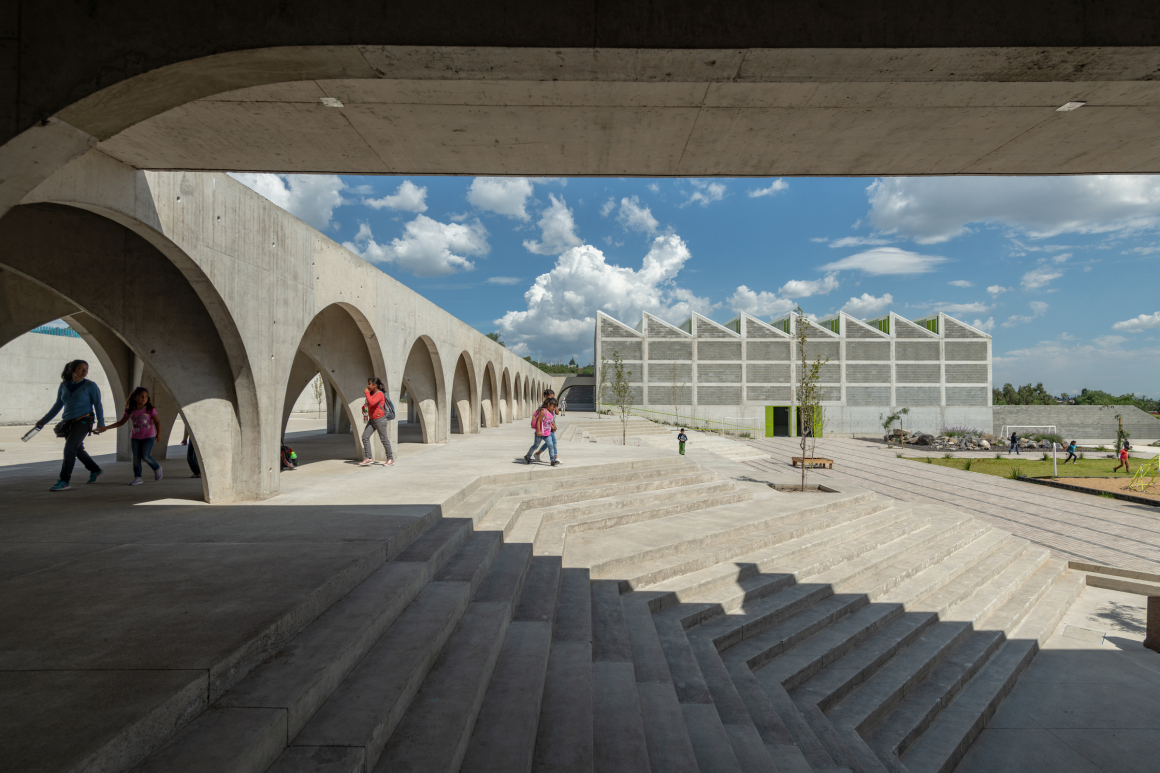
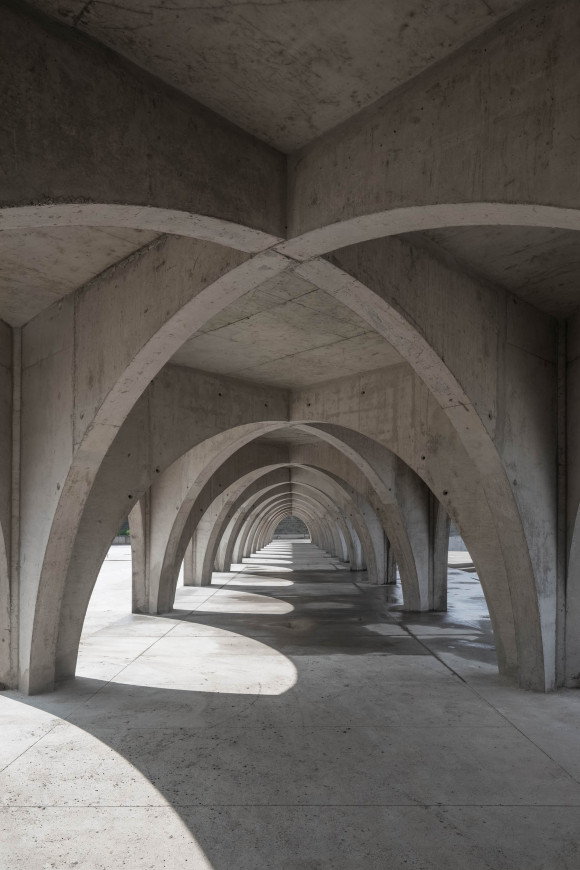
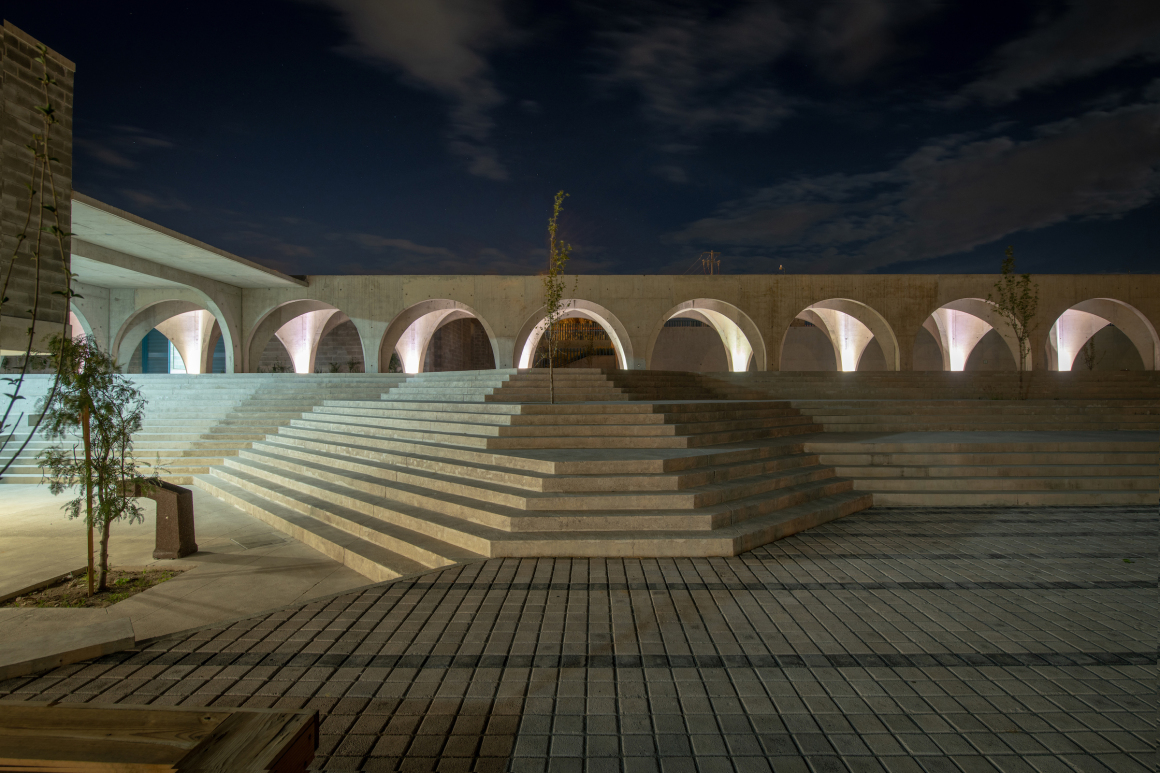

该项目共有三栋建筑,包括教育大楼、教室、音乐空间、艺术空间和计算机空间,以及厨房、图书馆和多功能厅。建筑只设单层,但有两个相邻的中央庭院,它们看起来就像是一个独立的空间。庭院帮助自然通风和照明,无需在建筑立面安装窗户,如此便达成了以下目标:保护儿童,因为无需走很远的路就可以监管教室;保护教室设施免受可能的破坏和盗窃;隔断体育和娱乐场所的视线,防止孩子们在课堂上分心。
The project was divided into three buildings: Building A the educational building, housing classrooms and spaces for music, art and computers, as well as a kitchen, library, and multipurpose room. Developed in a single-level volume, the building has two adjoining central courtyards understood visually as a single space. The patio provides natural ventilation and illumination without the need for windows on the façades, to achieve the following specific objectives: protecting children, as classrooms can be supervised without needing to walk long distances; safeguarding classroom facilities from possible vandalism and theft; and preventing the boys and girls being distracted during classes, by not providing views towards the sports and recreational areas.
▼项目轴测图 Axonometric
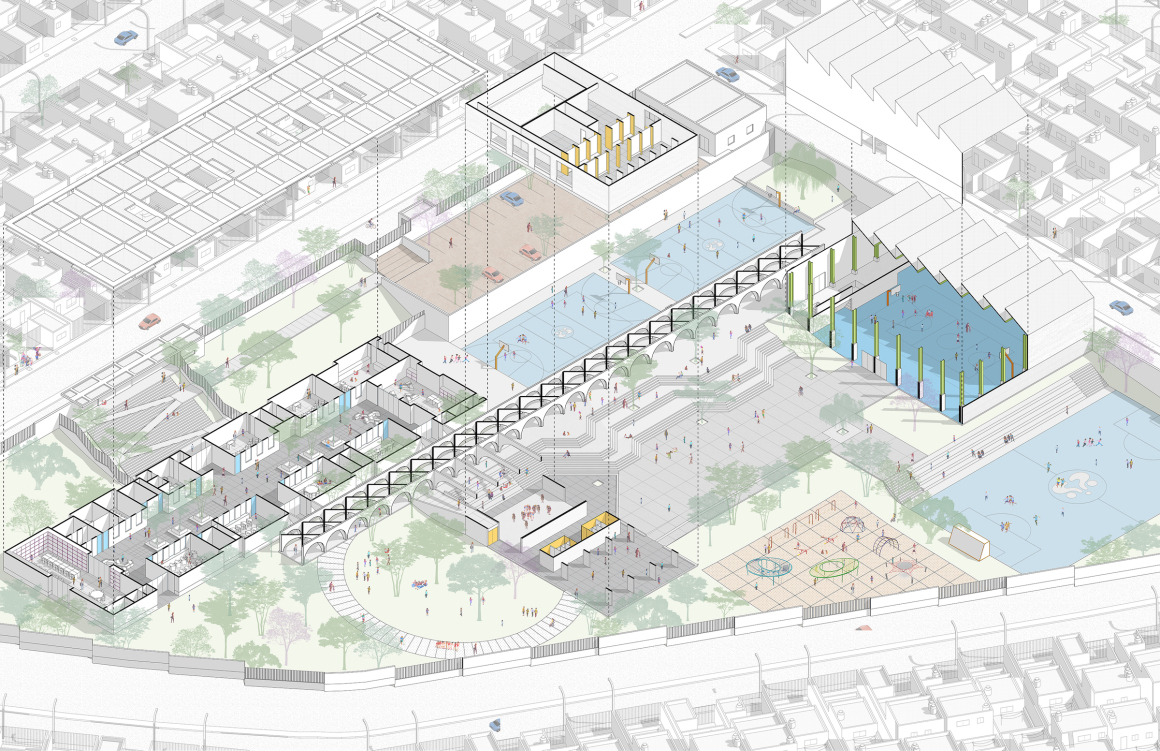
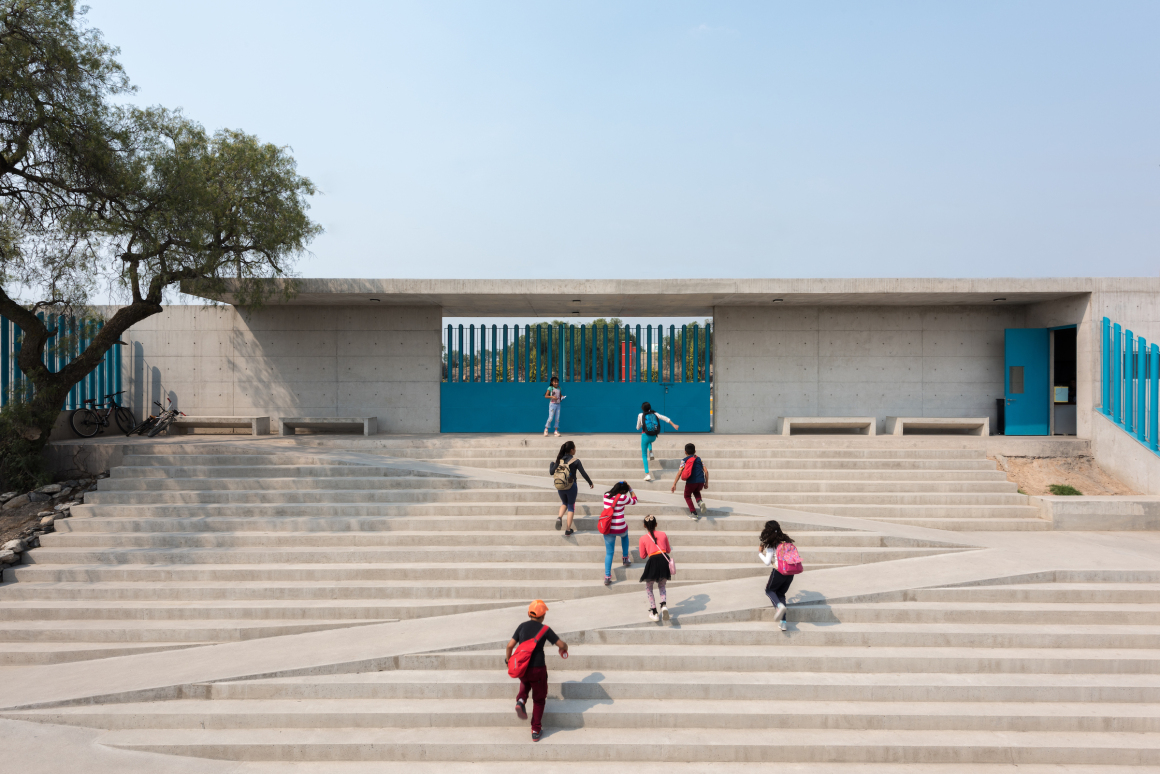
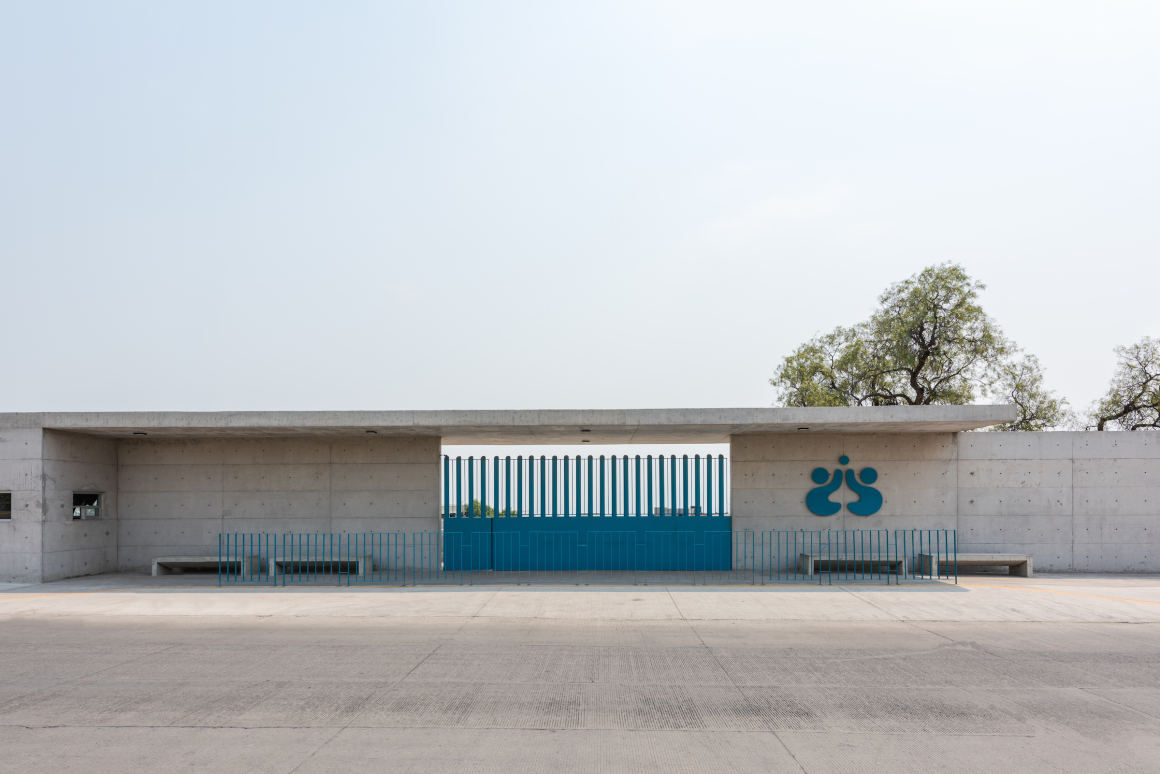
B楼是较少有学术活动的艺术楼,它包含一个舞蹈大厅,一个柔道厅,以及一个用于举办学生临时艺术展览和类似活动的大型多功能区域。该栋楼还设有一个半开放的礼堂,可供音乐演奏会、舞蹈表演和各种讲座使用,并与通向中央露台的主楼梯相连。当然还配有专为青少年设计的空间,他们可以在这个安全的环境中放松休息,也可以举办培训班和讲座,让这些青少年了解吸毒和其他成瘾的风险,以及性教育和其他主题教育。
Building B is the arts building. It is used for less academic activities: a hall for dance classes, a dojo, as well as a large multipurpose area for students’ temporary art exhibitions and similar events. The building also has a semi-open auditorium for music recitals, dance performances and all kinds of talks, and is fluidly connected with the main staircase leading to the central patio. The building is complemented with a space designed exclusively for teenagers, who can relax in a safe environment; training sessions and talks are held here to inform young people about the risks of taking drugs and other addictions, as well as sex education and other topics.


C楼是由一个大屋顶空间组成的体育大楼,适合各种活动和运动。其锯齿形的屋顶设计为这座朝北的建筑提供了自然采光。
Building C is the sports building and consists of a large roofed space adaptable to all kinds of activities and sports. This building’s north-facing orientation provides natural lighting thanks to its saw- tooth roof.
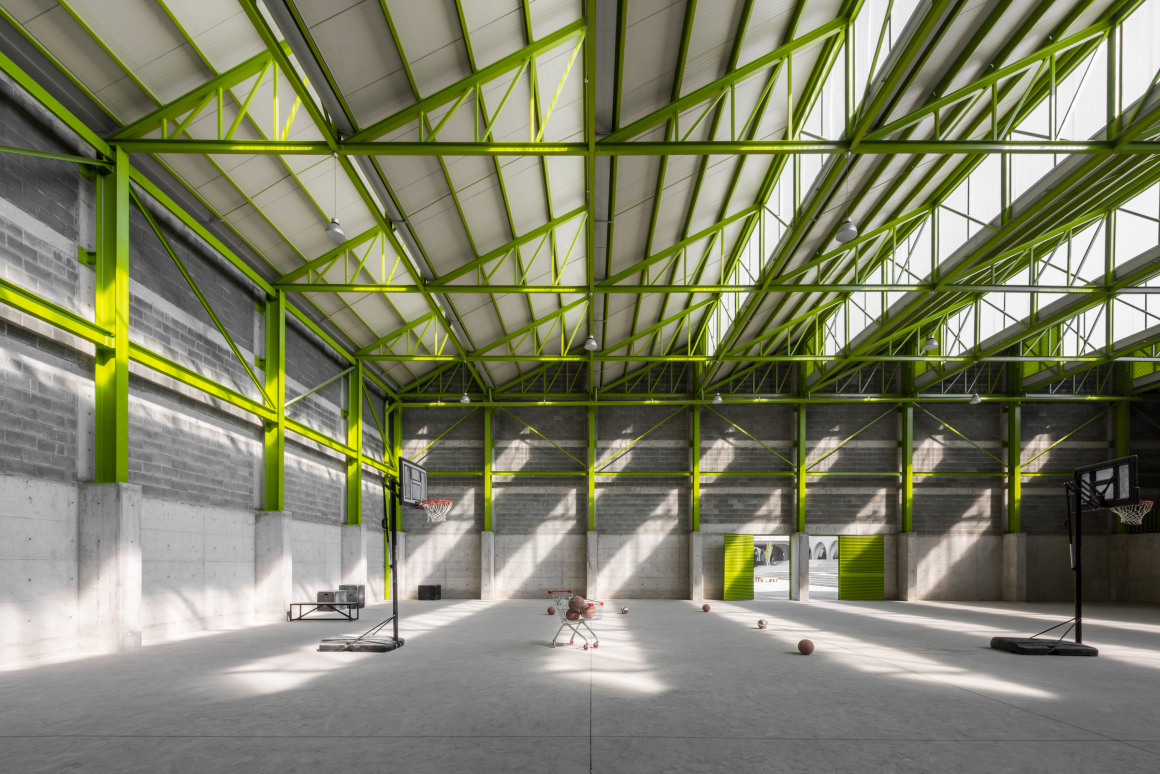
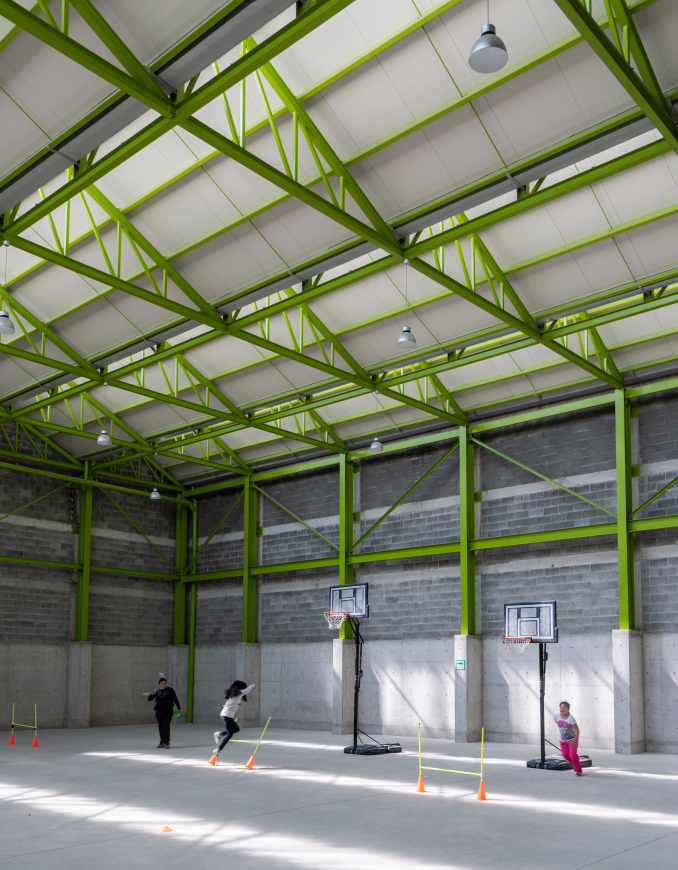
这三座建筑由一条有盖走廊连接,走廊作为引导轴线,将整个空间组织了起来。这个由24块呈拱形的椎骨组成的元素,是建筑设计的支柱。这种巧妙的几何拱廊,由裸露的混凝土拱门组成,其24个模块中的每一个都代表了一个人的脊椎骨,反映了综合教育和培训成就美好未来的理念。
The three buildings are connected by a covered corridor that functions as a guiding axis and to organize the overall space. This element—composed of 24 vertebrae in the form of arches—is the back- bone of the architectural design. The arcade is an ingenious geometric structure of exposed concrete arches. Each of the 24 modules represents a human vertebra reflecting the idea that comprehensive education and training is the foundation for a better future.
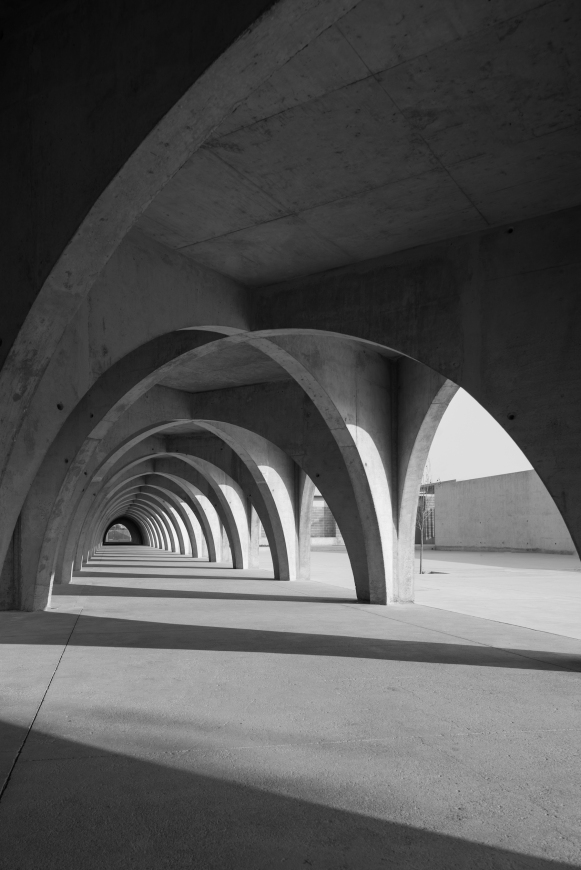
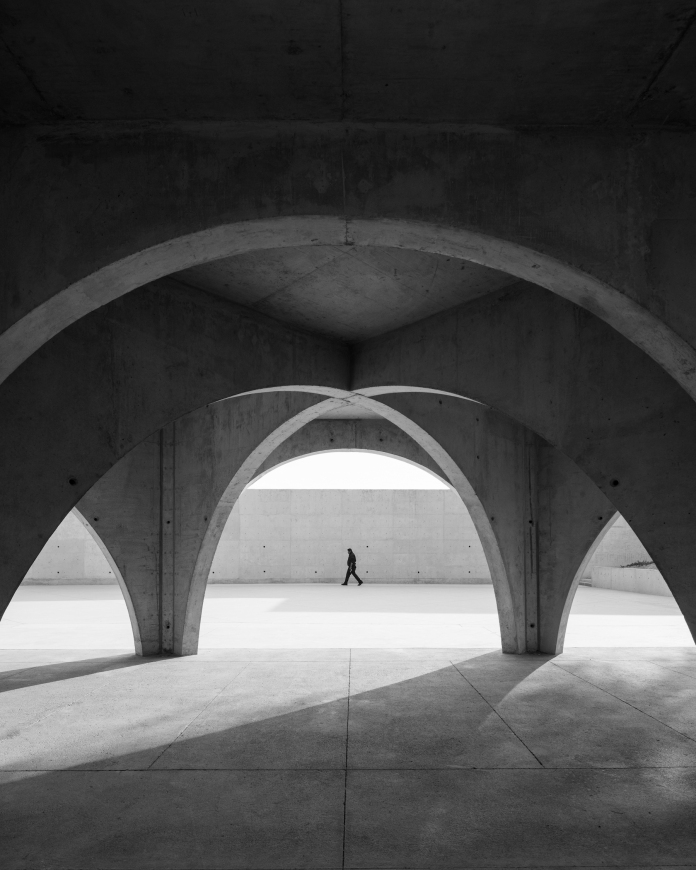



该项目建立的各种体育和娱乐区域:篮球场、足球场、广场、公园和花园,以及宽阔的广场和楼梯,塑造了自然的地形,融合相邻的空间,创造了一片开放和自由之地。
The project is completed with various sports and recreational areas: basketball courts, soccer pitches, squares, parks and gardens, as well as broad esplanades and stairways that sculpt the natural topogaphy and that flow into adjacent spaces, open and free of definition.
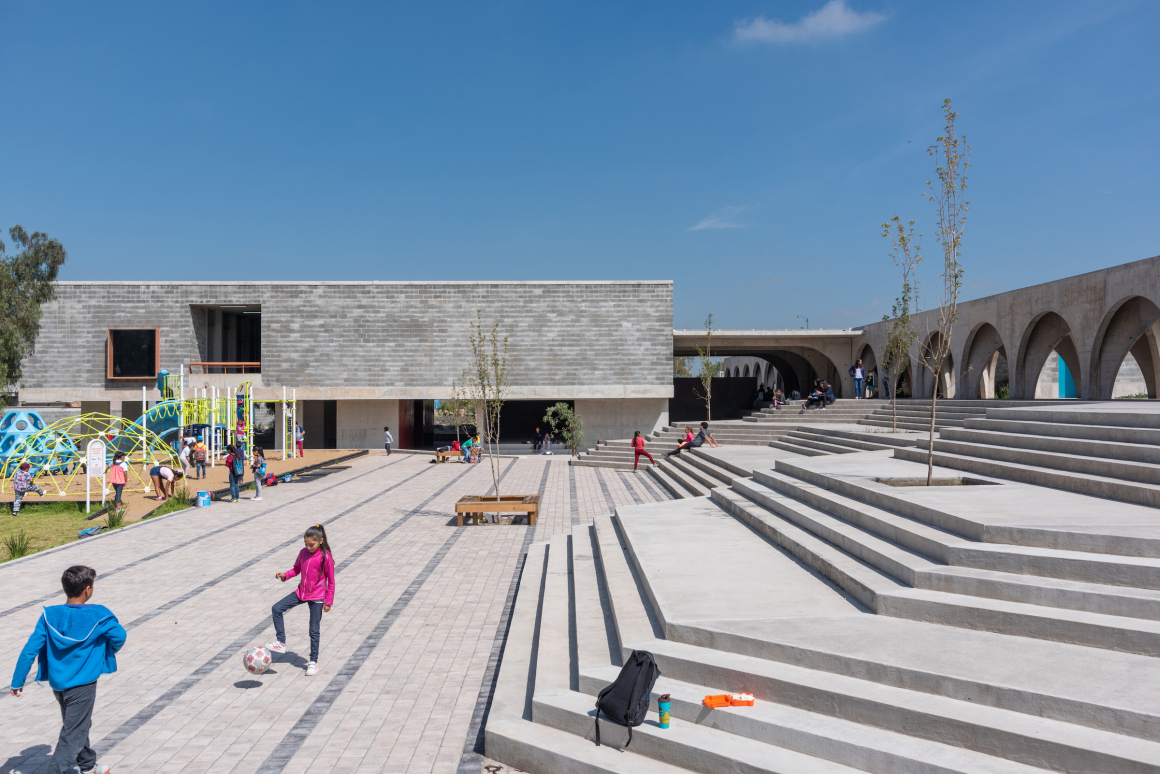
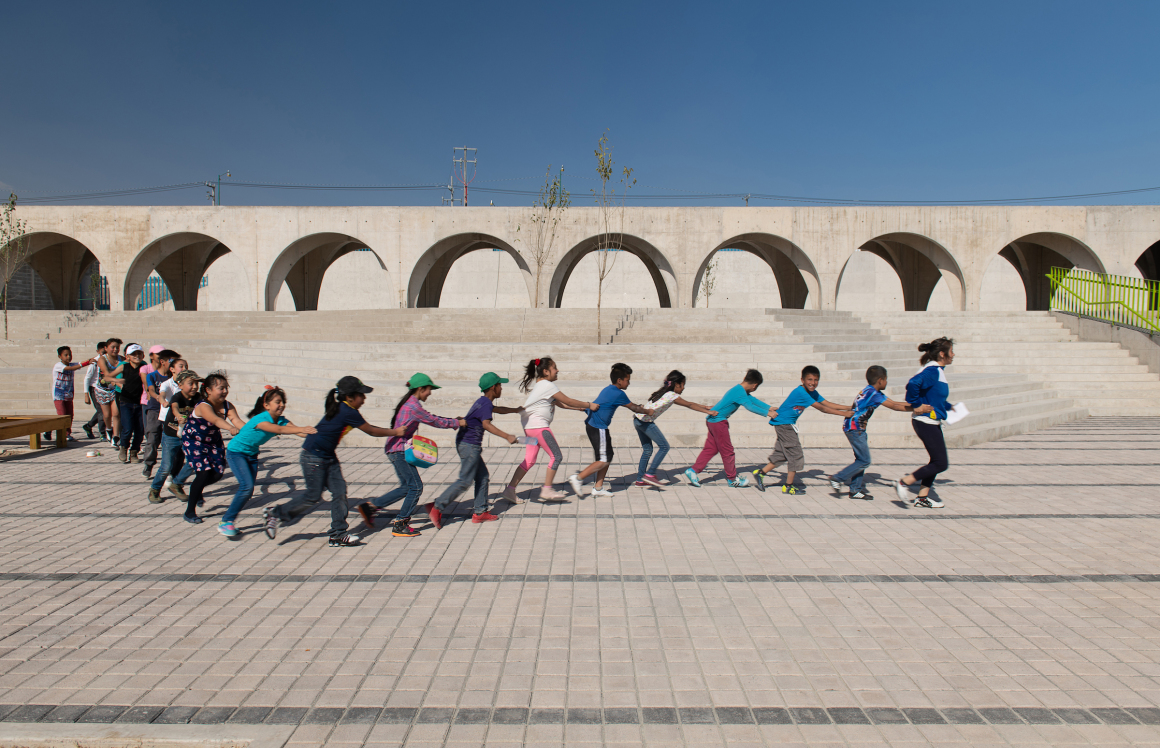

▼项目平面图 Floor Plan
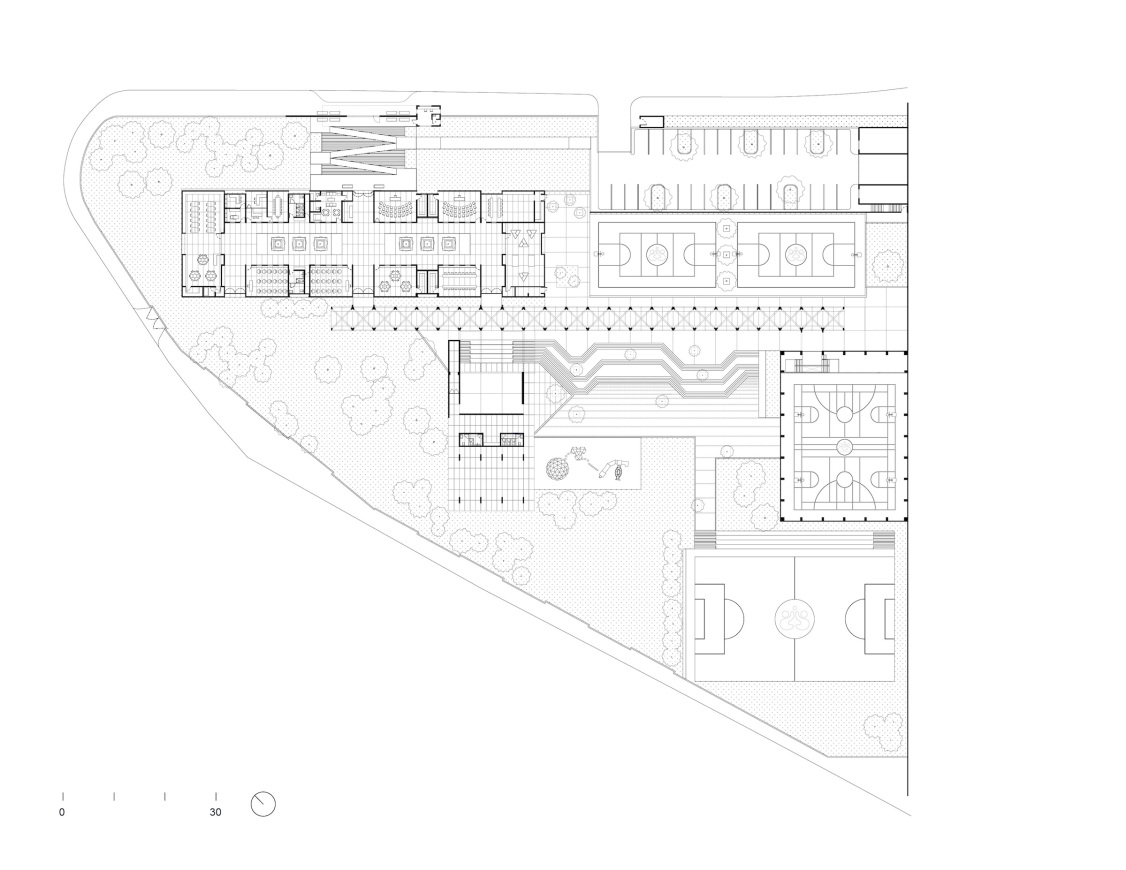
项目名称:男孩女孩俱乐部
用途:教育
面积:3500平方米
地点:墨西哥墨西哥州洛马斯德泰克马克
状态:已建成
年份:2019年
建筑设计:Centro de Colaboración Arquitectónica, Bernardo Quinzaños, Ignacio Urquiza
设计团队:Mauricio Garcia-Noriega, Tania Coronado, Ana Laura Ochoa, Sebastian Gnaedig
客户:Club de Niños y Niñas (男孩女孩俱乐部 )
建造商:Grupo PC – CARSO
其他专家:DECSA – Arq. Ricardo Camacho, BVG – Ing. Fernando Ventura
摄影师:Onnis Luque, Arturo Arrieta, Jaime Navarro
Name: Club de Niños y Niñas
Use: Educational
Area: 3,500 m2
Location: Lomas de Tecámac, Estado de México, México
Status: Built
Year: 2019
Architects: Centro de Colaboración Arquitectónica, Bernardo Quinzaños, Ignacio Urquiza
Design Team: Mauricio Garcia-Noriega, Tania Coronado, Ana Laura Ochoa, Sebastian Gnaedig
Client: Club de Niños y Niñas (Boys and Girls Club)
Constructor: Grupo PC – CARSO
Other Specialists: DECSA – Arq. Ricardo Camacho, BVG – Ing. Fernando Ventura
Photographer: Onnis Luque, Arturo Arrieta, Jaime Navarro
更多 Read more about: CCA | Centro de Colaboración Arquitectónica




0 Comments